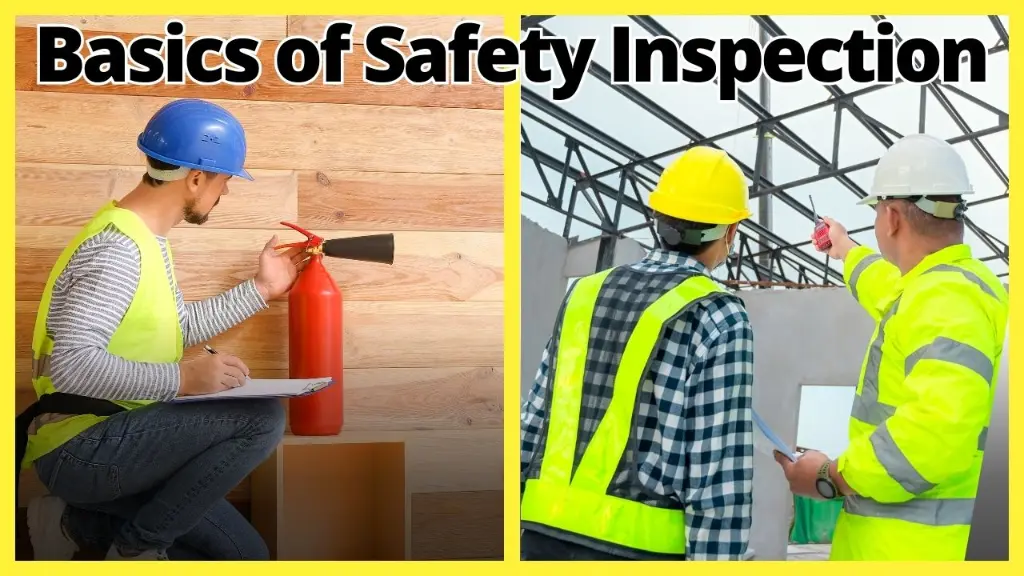Explore the fundamentals with our Safety Inspection Guide. Understand the basics of HSE observation or Safety Inspection in this comprehensive beginner’s guide.
1. The Basics of HSE Observation or Safety Inspection: A Beginner’s Guide to Safety Inspection
Welcome to the HSEC Awareness, your world of Health, Safety, and Environment (HSE)! If you are new to this field, you might be hearing terms like HSE Observation Tours, Safety Inspections, Site Safety Inspection, Focused Observations, Site Safety Walks, Hazard Hunts or other similar phrases.
Don’t worry, they are all different ways of saying or doing the same thing i.e. methodically checking the workplace for potential hazards and promoting safe work practices.
2. What is a Safety Inspection or HSE Observation Tour?
HSE observation tours or safety inspections or site safety inspections or focused observations are essential tools for identifying and controlling hazards, ensuring compliance with standards & regulations and enhancing safety culture as well as HSE performance.
Think of them as mini-detective missions focused on safety. You become your favourite Detective Character like Sherlock Holmes or Columbo or Byomkesh Bakshi or whoever your ideal is but with a mission to make the workplace safe.
It is a proactive approach to identify the potential hazards or HSE concerns and take necessary steps to control or minimise the associated risks before it turns into an incident.
In this process, you walk around the site or workplace, carefully observe or assess the general or specific aspects of safety, health & environment, such as:
- The physical condition of the premises, equipment and materials;
- The work activities, processes and procedures;
- The use of personal protective equipment (PPE) and safety devices;
- The behaviour and attitude of the work crew, supervisors and managers;
- The availability and accessibility of safety information and training;
- The effectiveness and efficiency of safety management systems;
- The environmental aspects;
- and many more…
So, you may be wondering what’s the difference between these terms: Observation Tour, Safety Inspection or Focused Observation?
- Observation Tour: This is a more informal and walking-around kind of assessment. This provides an opportunity to observe work practices, identify potential issues and have conversation with work crew to get their insights. You may or may not record the findings or observations but definitely take necessary steps to mitigate or eliminate the identified issues and address the concerns.
- Safety Inspection: This is a more structured and formal assessment. It is often conducted to check compliance against specific regulations or standards or project procedures. It involves a checklist of things to look for, like safety equipment, emergency procedures and potential hazards etc. It is like a thorough examination, ensuring everything is in place and working order.
- Focused Observation: As the name suggests, this focus on specific areas, tasks, or hazards. This is like taking a magnifying glass to look closely and precisely. It is a detailed examination of a particular process or activity to identify potential risks and find ways to improve HSE standards.
3. What is the purpose of a Safety Inspection or HSE Observation Tour?
The main purpose of HSE observation tours or safety inspections or site safety inspections or focused observations is to prevent incidents, injuries, and illnesses by:
- Identifying and eliminating/minimising hazards and risks before they cause harm;
- Checking and verifying the compliance with sHSE standards and regulations;
- Identifying and implementing the best practices and improvement opportunities;
- Educating and engaging the work crews, supervisors and managers on safety, health & environmental issues;
- Monitoring and evaluating the HSE performance and outcomes.
4. Importance of HSE Observation Tours or Site Safety Inspection?
- Preventing Incidents: HSE Observation Tours or Site Safety Inspection act as a preventative measure, identifying possible hazards before they turn into an incident.
- Employee Engagement: Generally these tours or inspections involve everyone, from management to frontline workers. It is an inclusive process where each team member can contribute by reporting unsafe conditions or practices. This engagement fosters a safety-conscious culture.
- Continuous Improvement: These programs are not a one-time affair. Regular checks allow for continuous improvement in HSE standards. Each observation tour or inspection provides valuable insights that can be used to refine sHSE protocols.
- Boost Morale & Productivity: When employees see that their safety is a priority, it boosts morale and creates a positive work environment. A safe and healthy work environment leads to happier and more productive employees.
- Protect the environment: By ensuring responsible use of the resources, minimising waste and its proper disposal as well as safe work practices, we can minimise our impact on the planet.
- Compliance with regulations: Each country, industry and work locations have a set of rules and regulations and directly or indirectly mandate regular safety inspections. By conducting HSE Observation Tours or Safety Inspection, organisations not only ensure the well-being of their workforce but also comply with legal requirements.
5. How to conduct HSE Observations or Site Safety Inspection?
Are you planning to conduct HSE Observations or Site Safety Inspection but not sure from where to start? Here are a few tips on how to start:
5.1 Preparation is key:
Before starting, understand your workplace, its processes and potential risks. Prepare a checklist or a tool that covers the aspects of safety, health & environment that you want to observe and inspect.
5.2 Get training if required:
Talk to your HSE or Safety department or whoever is leading the HSE aspects for proper training on observation techniques, hazard identification, and reporting procedures.
5.3 Choose your focus:
Start with small, well-defined areas or tasks, gradually expanding your scope as you gain confidence.
5.4 Be observant:
Observe and/or inspect the work environment and the work practices for any hazards and risks. Look for anything that seems out of place, unsafe, or could potentially cause harm.
5.5 Engage with your colleagues/work crew:
Interact and communicate with the work crew, supervisors, front line managers etc., and ask them questions as well as feedback. Observe together, discuss your findings and brainstorm solutions collaboratively.
5.6 Document everything:
Keep detailed records of your observations, including photos, notes, and recommendations.
5.7 Share your findings:
Report your observations/findings to the appropriate personnel and document the details and results of the inspection. Prioritise, assign and follow up on the corrective actions, and ensure their completion and verification.
5.8 Analyse:
Don’t forget to analyse the data and information from the inspection . Use the findings to identify and evaluate the trends, patterns and causes of the hazards and risks. You may also use the analysis to plan and set the goals and objectives for the future inspections and improvements.
6. Conclusion:
HSE observation tours or safety inspections or site safety inspections or focused observations are vital for improving workplace safety and health. They can help you prevent incidents, injuries, and illnesses, comply with standards and regulations, and enhance safety culture and performance.
However, they are not the only or the ultimate solution for workplace safety and health. They should be complemented by other tools and measures, such as risk assessment, safety training, safety communication, safety audit, etc.
As an HSE professionals, we should conduct HSE observation tours or safety inspections or site safety inspections or focused observations regularly and effectively, and use them as an opportunity to learn and improve.
For future updates, suggestion and discussion, please connect with us on Facebook, Twitter & Linkedin.






